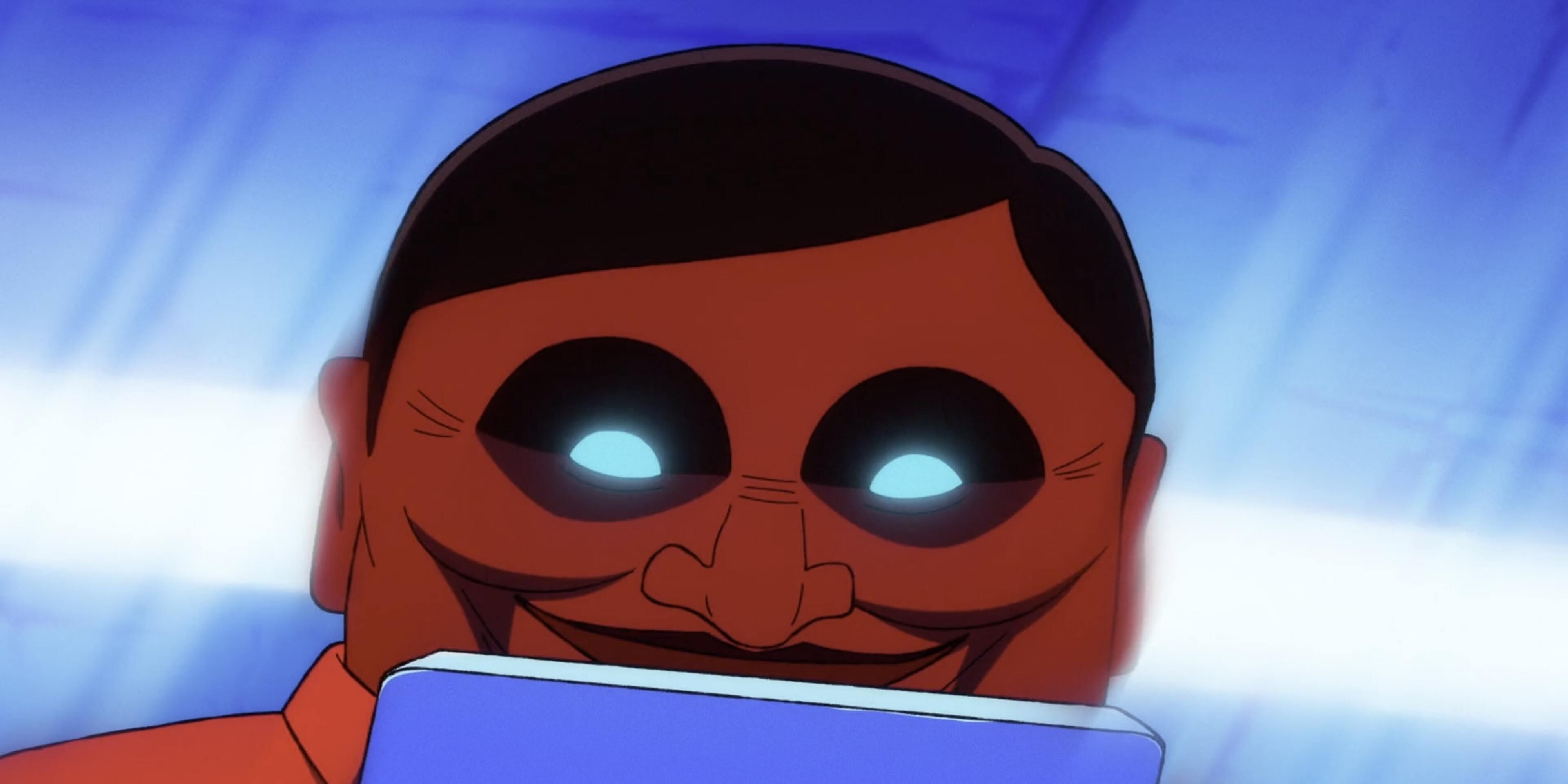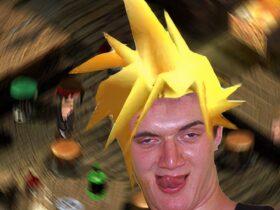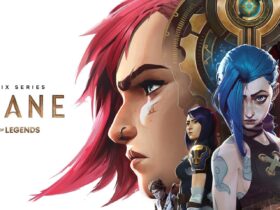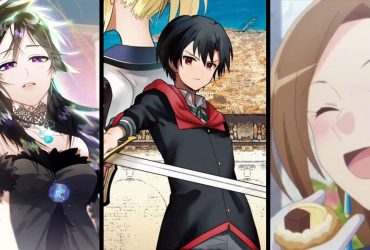Key Takeaways
- The opening theme “Otonoke” from Dandadan is praised as one of the best this season, with occult references in its lyrics.
- References to supernatural figures and characters from Japanese horror media are present.
- Nods to other pieces of work from Shōnen jump are also hidden in the song.
People aren’t just calling Dandadan the best anime of the season, its opening theme “Otonoke” by Creepy Nuts is also being hailed as one of the best anime opening themes this season. The song’s beat, tone, flow, and visuals are all stunning, but the lyrics hide some incredible secrets.
The title itself, “Otonoke” basically means “yokai/spirit of sound”, from the words “oto” meaning sound, and “ke” meaning strange, monster, spirit, or yokai. It’s named in a similar way to other supernatural-related Japanese things, like Mononoke, which is another word for yokai, but can be directly translated as “spirit of something”, and Yamanoke, a creature from a Japanese urban legend whose name means “yokai of the mountain”. The title is just the beginning, because just like Dandadan, Otonoke’s lyrics are filled with the weird and supernatural.

Related
Okarun’s Golden Balls Are The New Must-Have for Dandadan Fans
Okarun lost his family jewels. Now fans can buy them.
Occult Reference in the Lyrics
The Kuwabara Kuwabara Mantra
In Otonoke’s first verse, there’s a line with the term “kuwabara” being repeated several times. “Kuwabara” is a Japanese mantra meant to prevent lightning from striking you and can also be used to ward off evil spirits. An English equivalent for kuwabara would be knocking on wood. Kuwabara directly translates to “mulberry field”, and one theory as to the origin of the mantra is a Chinese legend that says mulberry trees don’t get struck by lightning.
Haireta is a Reference to Yamanoke
“Haireta” which directly translates to “I got in” or “I’m inside”, is a phrase commonly associated with Yamanoke, a malicious spirit that lives in the mountains. Yamanoke is described as a white humanoid figure with only one leg, no head, with a large, creepy smiling face on its torso. It is said to wander the mountains and possess women it comes into contact with. One sign that a person is possessed by Yamanoke is them muttering “haireta haireta haireta” over and over again.
Sada-chan and Kaya-chan Are Shortened Names of Figures from Horror Media
Sada-chan refers to a popular figure in Japanese horror, Sadako Yamamura from The Ring by Koji Suzuki. Sadako is a vengeful spirit whose precise origin varies depending on which source material you follow. She started out with The Ring novels and films from the 1990s, but since then, multiple retellings of the story through films, television, and even manga have sprung up.
Kaya-chan points to Kayako Saeki, another popular vengeful spirit from Japanese horror media, specifically from Ju-On, also known as The Grudge franchise. In 2016, Sadako and Kayako even had a crossover film called Sadako vs. Kayako.
The Repeated Use of the Number 4 in Verse 1 References the Superstitions Surrounding It
In Japan, four is considered an unlucky number in the same way thirteen is considered unlucky worldwide. The number is believed to be a bad omen because the Japanese word for four is pronounced “Shi”, which is also how the Japanese word for “death” is pronounced. One line in the lyrics also mentions the time 4:44, which is basically Japan’s equivalent to 3:00 AM being the devil’s hour or the witching hour. The song even goes on to mention a 4 shaku, 4 sun, 4 bu tall (traditional Japanese units of length that equate to 134.5cm or 52.97in) creature coming after you during that time. The weird height might be a reference to a monster from a Japanese creepypasta, Hasshaku-sama, who is eight shaku tall and whose name also literally means “eight shaku”.
The superstitious meaning behind the number four is also why Mista from Jojo’s Bizarre Adventure: Golden Wind hates it. Mista himself isn’t Japanese, but the creator or writer of the series probably inserted it as an inside reference for the Japanese audience.
Sai no Kawara & Tsumiageteku Top of Top from Verse 2
Sai no Kawara is a sandy beach in the underworld from Buddhist legends, and is where the souls of children who die prematurely go.
The following line, “Tsumiageteku top of top”, is also a reference to the legend of Sai no Kawara. It translates to “piling up stones to the top of top”, which is what the souls of deceased children had to do on the beach to gain salvation. Demons from hell were sent to topple the stacked stones, but fortunately, the patron deity of children, Jizō Bosatsu, saved them.
Moji Doori Otsukare Sama yan in the Final Line of the First Verse
Listeners might be familiar with the Japanese phrase “otsukare sama deshita”, which can translate to “good job” when appreciating the work someone has done. However, there is a Japanese creepypasta that changed one of the kanji to make otsukare sama deshita mean “You’re haunted” while keeping the pronunciation. In Otonoke, otsukare uses the same kanji that gives it the twisted meaning from the creepypasta.
An M. Knight Shyamalan Reference
Koiu koto ka Shamalan translates to “So, this is what you wanted to show us, Shyamalan” which is a reference to the filmmaker M. Night Shyamalan. Specifically, it points to the “I see dead people” scene from his film The Sixth Sense.

Related
Dandadan: What Are Location-Bound Spirits?
The giant crab in the end Dandadan’s Turbo Granny arc is known as a Location-Bound Spirit. Just how exactly are these spirits different?
References to Other Shōnen Jump Titles
Dandadan‘s manga was serialized by Shōnen Jump, placing it alongside some of the most well-known series in the shōnen genre. Otonoke’s references don’t all point to supernatural figures and occurrences; it also has several lines in the second verse that pay homage to some of the great shōnen manga and anime.
- Tsumiageteku top of top – As mentioned above, this line relates to the legend of Sai no Kawara. However, it actually also points to the opening theme of Mashle season 2, “Bling-Bang-Bang-Born”, which was also played by Creepy Nuts. One of the lines in that song is “To the next, to the highest peak”.
- Oni to Chanbara – This line translates to “sword fighting with demons” and is a reference to Demon Slayer.
- The Lyrical Chainsaw Massacre – This line is written in plain English and is a reference to Chainsaw Man.
- Wataru oounabara hana uta singin’ – Translates to “Crossing the open sea, singin’ to myself”, which refers to One Piece.
- Sha-la-la – Is the opening words to the Naruto opening theme, called “Hotarunohikari” by Ikimonogakari.
- Haraitai no nara matsudai made no satsutaba – Translates to “If you need purification, bring stacks of bills till the end of time” and is a reference to the exorcisms in Jujutsu Kaisen.

Related
Dandadan: 8 Strongest Aliens In The Manga, Ranked
Among the many aliens that feature in Yukinobu Tatsu’s manga, these are the strongest of them all.
Dandadan is now available to stream on Crunchyroll, Netflix, Muse Asia, and several other streaming platforms. The release date of Dandadan, episode 9, is set to be November 29, 2024, at 9:00 AM PT.

- Release Date
- September 13, 2024

















Leave a Reply